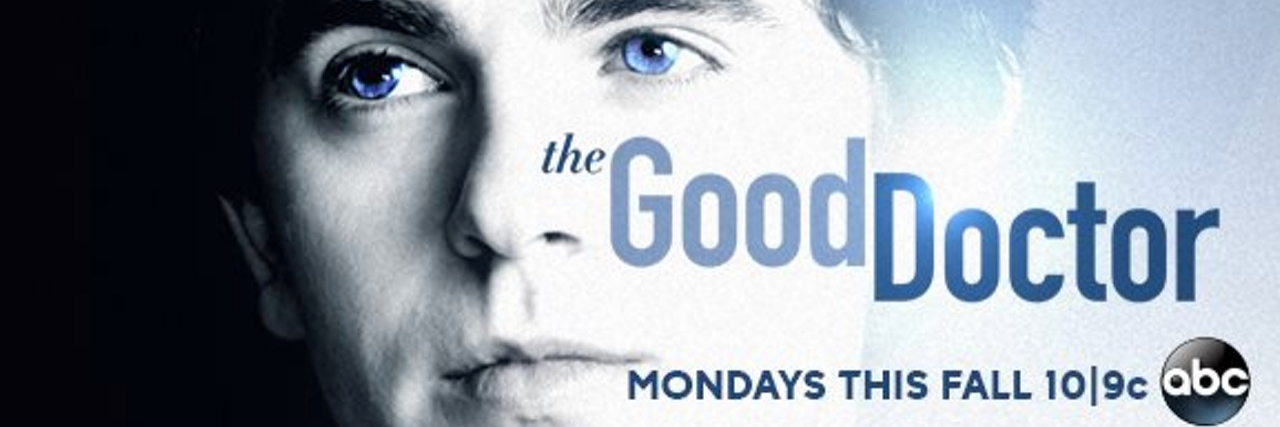The Problem With How Hollywood Tries to 'Accurately' Portray Autistic Characters
Sometimes the news isn’t as straightforward as it’s made to seem. Elizabeth Cassidy, The Mighty’s News Intern, explains what to keep in mind if you see this topic or similar stories in your newsfeed. This is The Mighty Takeaway.
A recent study published in Psychiatry Research showed that many portrayals of autism in Hollywood align “unrealistically well” with diagnostic criteria in the DSM-5, a manual doctors use to diagnose mental disorders and conditions. The study said:
The large majority of the characters evaluated obtained a very high score against DSM-5 criteria for ASD. Even the lowest scoring character scored at 50% of the possible total in both the social communication and restricted repetitive behaviour domains. This is in line with Garner et al. study (2015) on ASD-characters in film where they reported “very high levels” to “extreme levels” of autism related [characteristics]. This raises the question of whether meeting all diagnostic criteria (seven portrayals scored at the maximum possible, indicating that every characteristic used in diagnosis was apparent in that portrayal) can be described as “accurate.”
“The characters portrayed on screen might be better described as ‘archetypal’ in relation to diagnostic criteria,” the study’s authors wrote. “This could in itself lead to difficulty if people form a stereotypical view of persons with ASD.”
The autism spectrum is incredibly broad, but Hollywood’s portrayal is specific. By portraying a small section of the spectrum, Hollywood enforces stereotypes about autistic people.
“A single film or TV series cannot capture the richness and variety of experience that resides within the autism spectrum,” the study’s authors wrote. “Thus we conclude that for portrayals of ASD on screen to have true value in developing public understanding of the condition, a larger and more varied number of autistic characters need to be included in the cultural canon.”
Many shows have a character who is verbal, has an intense interest in a certain subject, and displays genius-like skills or traits mostly associated with savant syndrome.
According to the National Institute of Health, people with savant syndrome have exceptional ability in a certain skill like music or mathematics while also having an intellectual disability. It only affects about 10 percent of autistic individuals.
Dr. Shaun Murphy, an autistic character played by Freddie Highmore (who isn’t autistic) in “The Good Doctor,” has savant syndrome.
“Most people I’ve met who don’t have a personal connection to someone with autism think they’re all geniuses, and I believe that is largely due to how autism is portrayed in the media,” Hillary LaFever-Ceja, a member of The Mighty’s autism community, wrote on Facebook. “In reality, most autistic people can’t count cards or understand quantum physics, but they still deserve respect and support.”
The representation of economic status and demographics of the characters is also limited.
Characters tend to be middle- to upper-class white males. Yes, ASD is more likely to affect boys than girls, but it can affect all racial, ethnic and socioeconomic groups, according to the Centers for Disease Control.
A study published in Pediatrics, the official journal of the American Academy of Pediatrics, showed the increased costs associated with caring for a child on the spectrum. Additional costs for children on the spectrum surmounted to over $17,000 per year for services that included health care, school systems and related therapies.
It is unfair for Hollywood to mainly portray families who don’t seem to be struggling to pay for the added expenses, and characters who are primarily white males would have people believing autism doesn’t affect other races or females.
Hollywood should also hire autistic actors. Most portrayals are done by actors who are not on the spectrum or are considered “neurotypical.” Lack of diversity in casting is nothing new and has been a point brought up repeatedly in the disability community. Autistic actors would add authenticity to their roles and could consult with the writers to help with the accuracy of the portrayal.
While Robia Rashid, creator of the show “Atypical,” did talk to people on the spectrum, an autistic individual wasn’t on staff to read the scripts. They did employ an autism researcher and “expert,” but no matter how much of an expert someone is, nothing can equate to someone who is actually autistic. They’re the ones who live with ASD and truly know what it’s like. Shows like “Atypical” add a human element to a diagnosis that people might not otherwise encounter. Why not talk to the humans who live on the spectrum and can add an authentic human element to the storyline? Don’t get rid of the expert, just hire someone on the spectrum in addition.
David Shore, executive producer of “The Good Doctor,” said they consulted people on the spectrum for the show. But he also said the character is “not there to represent autism, he’s there to represent Dr. Shaun Murphy.” While each character will be unique, just like each person on the spectrum is unique, to say someone in the media who has autism doesn’t represent autism is wrong.
Media in itself is representation, and they should take into account how they are representing autism. As the study first mentioned said, representations of autism can lead to stereotypes. Since there aren’t a lot of shows out there portraying autism, each show that does is adding to people’s understanding of it.
While portraying autism has become more popular with shows like “The Good Doctor” and “Atypical,” Hollywood can do a better job of representing those on the spectrum, no matter how broad. Include more characters who are nonverbal and don’t have genius-like abilities, and hire autistic people for cast and crew.
Hollywood can start with adding characters to shows like “Atypical.” Just because a show has one main character on the spectrum doesn’t mean it has to be the only main character.

